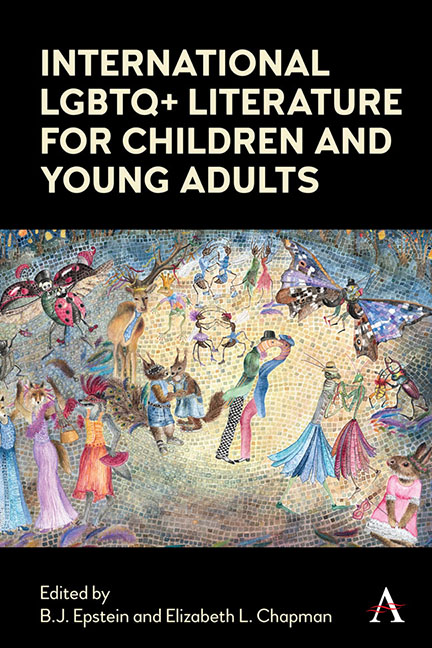Book contents
- Frontmatter
- Dedication
- Contents
- List of Illustrations
- Acknowledgements
- Notes on contributors
- Introduction
- BRAZIL
- FRANCE
- GERMANY/ AUSTRIA
- GREENLAND
- INDIA
- INDIGENOUS WRITING
- ITALY
- MULTINATIONAL
- MULTINATIONAL
- MULTINATIONAL
- THE PHILIPPINES
- SLOVENIA
- SOUTH KOREA
- SPAIN
- SWEDEN
- SWEDEN
- List of Primary Texts
- Index
Introduction
Published online by Cambridge University Press: 18 November 2021
- Frontmatter
- Dedication
- Contents
- List of Illustrations
- Acknowledgements
- Notes on contributors
- Introduction
- BRAZIL
- FRANCE
- GERMANY/ AUSTRIA
- GREENLAND
- INDIA
- INDIGENOUS WRITING
- ITALY
- MULTINATIONAL
- MULTINATIONAL
- MULTINATIONAL
- THE PHILIPPINES
- SLOVENIA
- SOUTH KOREA
- SPAIN
- SWEDEN
- SWEDEN
- List of Primary Texts
- Index
Summary
This book stems from what might seem like a simple question: What sort of LGBTQ+ books for young readers are being written around the world? To develop this initial query further, we wondered how different languages and different cultures approach LGBTQ+ topics, especially in works for children and young adults. We had seen little written about this in English, which is not a surprise given how myopic English-speaking cultures tend to be about literature from other countries (Post suggests that the number of translations to English is holding steady at 2 to 4 per cent (2019, n.p.)), and we felt it was time to rectify this gap in knowledge and to bring a comparative approach to a growing field of study, namely LGBTQ+ children's literature.
As the academic study of children's literature has developed over the past few decades (see, among many other examples, work such as Coats 2017; Hunt 1994, 2005; Lerer 2008; Lurie 1990; Maybin and Watson 2009; Nikolajeva 1996; Nikolajeva and Scott 2006; Nodelman and Reimer 2002; Reynolds 2005, 2007, 2011; Reynolds and Tucker 1998; Rose 1993; and Townsend 1990), more attention has been paid to topics such as the depiction of gender identity and sexuality (for example, Abate and Kidd 2011; Bruhm and Hurley 2004; Cart and Jenkins 2006; Epstein 2013; Flanagan 2008; Gillis and Simpson 2015; James 2009; Jenkins and Cart 2018; and Naidoo 2012). Furthermore, there has been an increased focus on diversity and multicultural literature more generally (Gopalakrishnan 2011; Nel 2017; O’Sullivan 2005; Ramdarshan Bold 2019; Sands-O’Connor 2017); the translation of children's books (Epstein 2012; Lathey 2006, 2010; Oittinen 2000); the roles of authors, illustrators, publishers, editors, translators, librarians, teachers and others in the production and usage of books for children (which is touched on in many of the works already cited here); and the interaction of words and images (Hamer et al. 2017; Kummerling-Meibauer 2018; Nodelman 1988), among many other issues relevant to the discussions in this book.
- Type
- Chapter
- Information
- Publisher: Anthem PressPrint publication year: 2021

